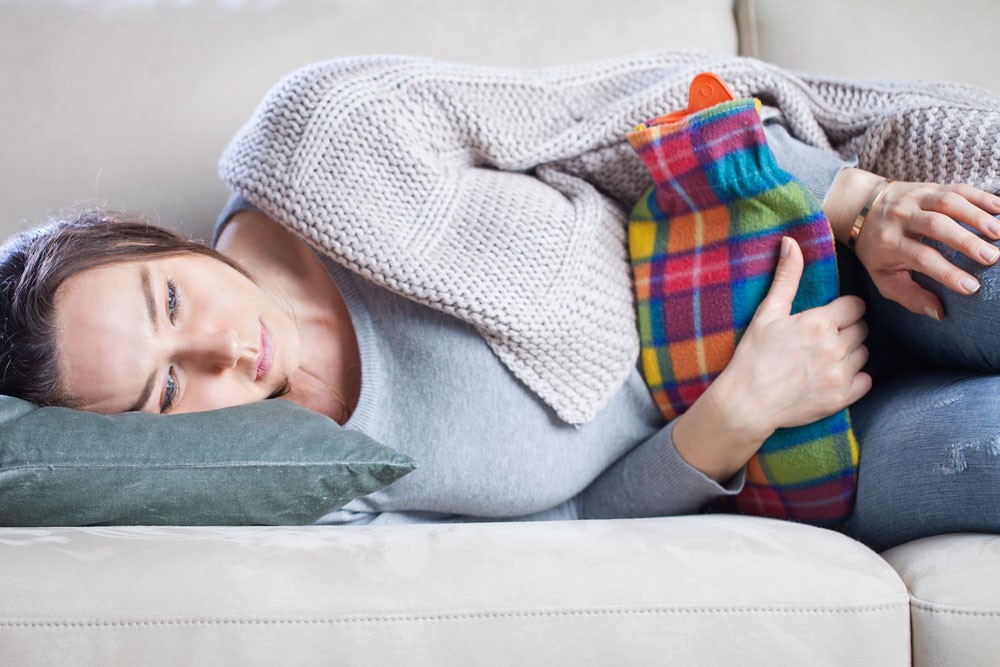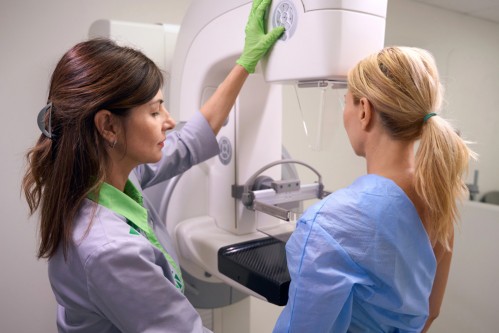
Alleviating Premenstrual Syndrome (PMS)
Author: Donna L Schoenfelder, MD
Premenstrual Syndrome (PMS) has been recognized for centuries, being described by Hippocrates in the 5th century BC. It has been blamed for everything from snug-fitting pants to murder. But, what is it and what can be done to alleviate it?
What is it?
PMS is a combination of emotional, behavioral and physical symptoms that occur in a cyclical fashion with a woman's menstrual cycle. By definition, the symptoms begin after ovulation and resolve within a day or two of the onset of menstruation. Symptoms can last from 2-14 days per month. There are over 150 different described symptoms, with the combination and severity of symptoms unique to each woman and often varying in intensity month to month.
An estimated 75% to 90% of reproductive age women have at least some premenstrual symptoms, but the number who have symptoms severe enough to affect their lives and warrant treatment is probably closer to 25%. About 5% have the most severe form of PMS called Premenstrual Dysphoric Disorder (PMDD). PMDD causes marked functional impairment in a woman's life, adversely affecting her ability to cope at home, at work and in social situations.
What causes it?
The cause of PMS is not entirely known. All ovulating women have significant fluctuations of estrogen and progesterone during the premenstrual time, with a large drop in levels just before menses. Women with PMS seem to have a different response to these fluctuations.
There is no lab test to diagnose PMS. The best method to accurately diagnose PMS and get a sense of the severity is to do prospective daily symptom charting. The most prominent and distressing symptoms are chosen and charted on a daily basis, recording presence and severity over the course of 2-3 menstrual cycles. Menstrual symptom charting can sometimes reveal an underlying disorder that may require evaluation and treatment.
A number of psychiatric, neurologic, gynecologic and endocrine disorders can have symptom fluctuations thru the menstrual cycle which may mimic PMS. This is termed Premenstrual Magnification Syndrome. In these cases, the underlying disorder needs to be evaluated and treated, not just the premenstrual exacerbation.
What can you do?
Symptom charting may also be the first step in the treatment of PMS. Understanding the predicable timing of symptoms can help a woman take control. There are a number of self-help strategies to decrease PMS symptoms. Diet changes such as frequent small meals and avoiding simple carbohydrates can be helpful. Decreasing or eliminating caffeine, salt, alcohol and nicotine can reduce symptoms also. Regular exercise and adequate sleep can decrease PMS symptoms, as can stress management. Some women find significant improvement with relaxation techniques or massage therapy.
A number of nonprescription alternatives have been recommended to help treat PMS symptoms. Most have not been well studied or proven to help more than placebo in a controlled trial. Calcium supplementation has the best evidence of helping PMS symptoms. Vitamin B6, magnesium and Vitamin E have some studies to support improvement in symptoms, but excess doses, especially of B6 can be harmful. As vitamin and mineral deficiencies have been implicated in contributing to PMS in some studies, a good multivitamin is probably worthwhile. Various herbal treatments have been advocated including evening primrose oil and chaste berry tree extract, but again are not well studied.
What can your physician do?
Especially with more severe PMS and PMDD, these self help tips may not be adequate to control symptoms. Working with a physician, many women can be helped with prescription medications. Diuretics can help with bloating and breast tenderness.
Non-steroidal anti-inflammatory medications can help with physical aches and cramps. Birth control pills can significantly decrease the hormonal fluctuations that seem to be at the heart of PMS.
Newer progesterones with mild diuretic effect have been shown more effective as have newer dosing regiments with shorter or non-existent hormone free intervals.
The mood changes of PMS can be some of the most debilitating symptoms. Some antidepressants, especially SSRIs (selective serotonin re-uptake inhibitors), have proven to be very helpful. Some women may be able to use these medications just during the PMS time, which can decrease adverse side effects.
In Conclusion
This certainly is not a comprehensive list of possible treatments, but should get across the idea that PMS is not just a curse to be endured. Most sufferers can find significant improvement with one or more treatment options. Also - take heart, eventually PMS is cured by a little thing called menopause…but that is a whole other story!

Related Articles

Women's Health
Have You Completed a Breast Cancer Risk Assessment?
OakLeaf Clinics has invested in software to identify and manage patients at high risk of developing...

Women's Health
AI Helps Us Detect Breast Cancer
We're using the latest AI technology to improve breast cancer detection during your mammogram. This...

Women's Health
Now Using AI to Deliver the Highest-Quality Mammograms
OakLeaf Clinics is now using Volpara Analytics, an AI-based software platform that helps our...

Women's Health
Do You Know Your Breast Density?
Dense tissue can camouflage cancer on the mammogram and increase your risk of developing cancer in...
